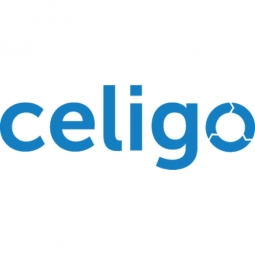Technology Category
- Application Infrastructure & Middleware - Data Exchange & Integration
- Application Infrastructure & Middleware - Middleware, SDKs & Libraries
Applicable Industries
- Retail
- Telecommunications
Applicable Functions
- Maintenance
- Sales & Marketing
Use Cases
- Leasing Finance Automation
- Retail Store Automation
Services
- System Integration
About The Customer
TelQuest International is a leading independent distributor of telecommunication equipment based in Wayne, New Jersey. The company has been in operation for over 30 years, offering services such as repair, installation, replacement, maintenance, and other related services. As part of their growth strategy, TelQuest was planning to expand their B2C offerings. To support this expansion, they needed to improve their operational efficiency and automate their processes. The company was using a manual system to manage hundreds of orders from online marketplaces, a process that was not scalable and was prone to errors.
The Challenge
TelQuest International, a leading independent distributor of telecommunication equipment, was planning to expand their B2C offerings. However, they faced significant challenges in managing their operational efficiency. The company had a team of over 25 people manually managing hundreds of orders from online marketplaces. This process was not only time-consuming but also prone to errors, leading to issues such as incorrect entries for items, quantities, and prices. The manual entry system was not scalable and was hindering the company's growth. The challenge was to identify and implement a technology solution that could automate these processes, improve operational efficiency, and support the company's expansion plans.
The Solution
To address these challenges, TelQuest selected Celigo's prebuilt Integration Apps to NetSuite for automating key business processes. For other applications like Paypal, they used custom integrations built on the Celigo Integrator.io iPaaS. They also used Integrator.io as an in-product automation platform, which allowed them to automatically export NetSuite data through Celigo, transform it, and then return it back to NetSuite to trigger automatic updates. Despite having no advanced technical experience or prior knowledge on integrations, the team was able to use Celigo’s solutions quite easily, thanks to its user-friendly interface. This solution not only automated their processes but also enhanced their experience with the system.
Operational Impact
Quantitative Benefit

Case Study missing?
Start adding your own!
Register with your work email and create a new case study profile for your business.
Related Case Studies.

Case Study
Improving Production Line Efficiency with Ethernet Micro RTU Controller
Moxa was asked to provide a connectivity solution for one of the world's leading cosmetics companies. This multinational corporation, with retail presence in 130 countries, 23 global braches, and over 66,000 employees, sought to improve the efficiency of their production process by migrating from manual monitoring to an automatic productivity monitoring system. The production line was being monitored by ABB Real-TPI, a factory information system that offers data collection and analysis to improve plant efficiency. Due to software limitations, the customer needed an OPC server and a corresponding I/O solution to collect data from additional sensor devices for the Real-TPI system. The goal is to enable the factory information system to more thoroughly collect data from every corner of the production line. This will improve its ability to measure Overall Equipment Effectiveness (OEE) and translate into increased production efficiencies. System Requirements • Instant status updates while still consuming minimal bandwidth to relieve strain on limited factory networks • Interoperable with ABB Real-TPI • Small form factor appropriate for deployment where space is scarce • Remote software management and configuration to simplify operations

Case Study
Digital Retail Security Solutions
Sennco wanted to help its retail customers increase sales and profits by developing an innovative alarm system as opposed to conventional connected alarms that are permanently tethered to display products. These traditional security systems were cumbersome and intrusive to the customer shopping experience. Additionally, they provided no useful data or analytics.

Case Study
How Sirqul’s IoT Platform is Crafting Carrefour’s New In-Store Experiences
Carrefour Taiwan’s goal is to be completely digital by end of 2018. Out-dated manual methods for analysis and assumptions limited Carrefour’s ability to change the customer experience and were void of real-time decision-making capabilities. Rather than relying solely on sales data, assumptions, and disparate systems, Carrefour Taiwan’s CEO led an initiative to find a connected IoT solution that could give the team the ability to make real-time changes and more informed decisions. Prior to implementing, Carrefour struggled to address their conversion rates and did not have the proper insights into the customer decision-making process nor how to make an immediate impact without losing customer confidence.

Case Study
Vodafone Hosted On AWS
Vodafone found that traffic for the applications peak during the four-month period when the international cricket season is at its height in Australia. During the 2011/2012 cricket season, 700,000 consumers downloaded the Cricket Live Australia application. Vodafone needed to be able to meet customer demand, but didn’t want to invest in additional resources that would be underutilized during cricket’s off-season.









